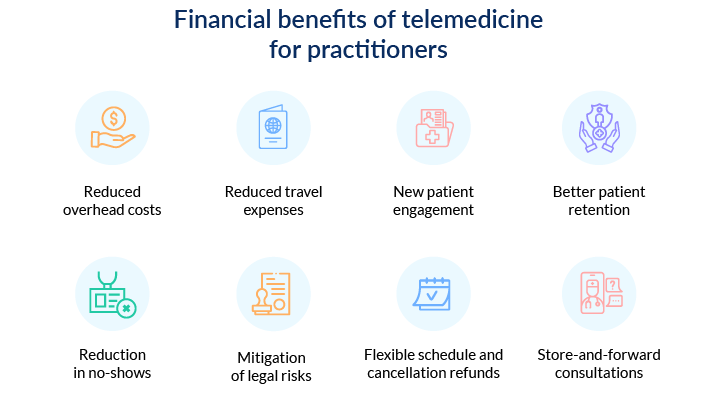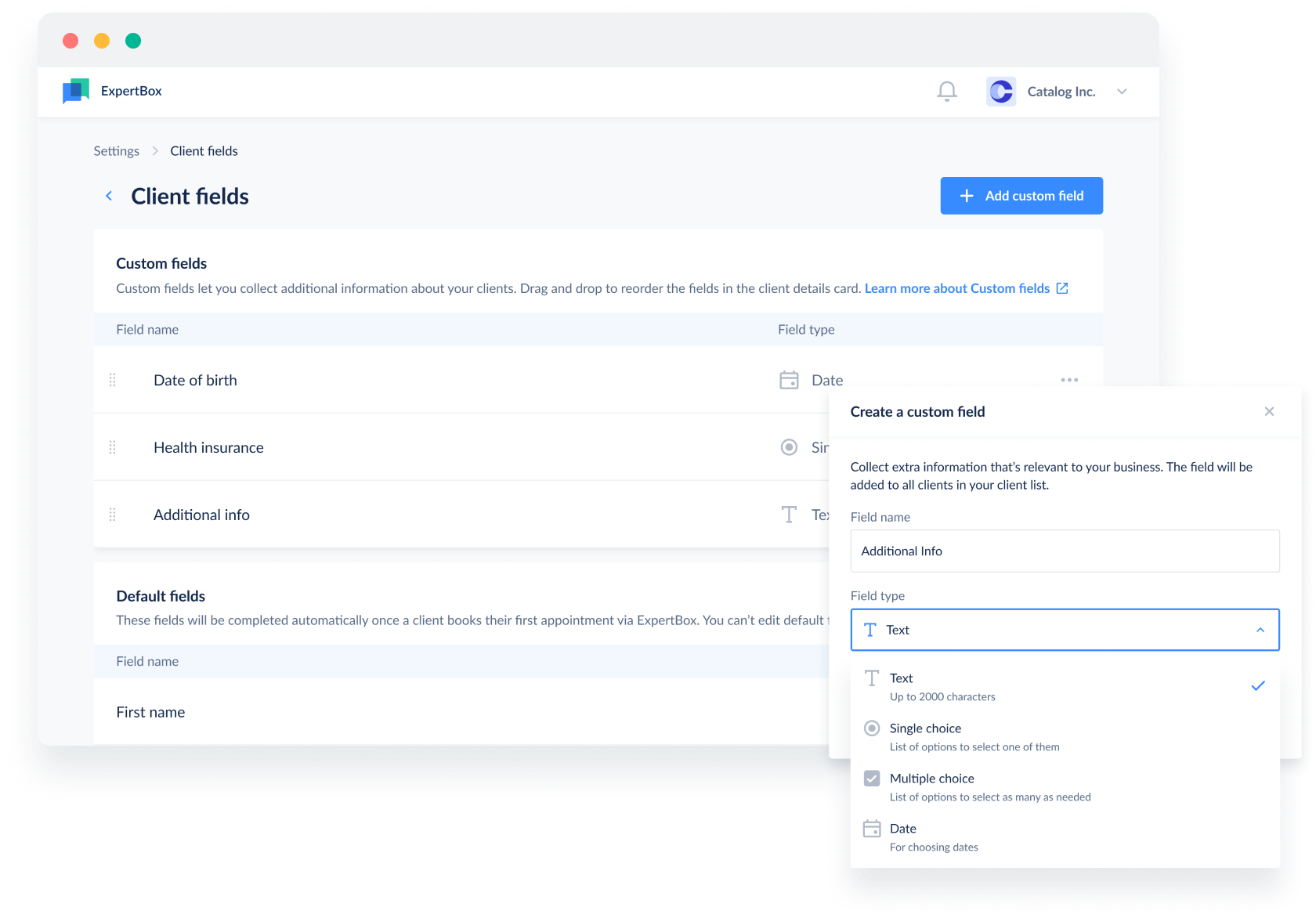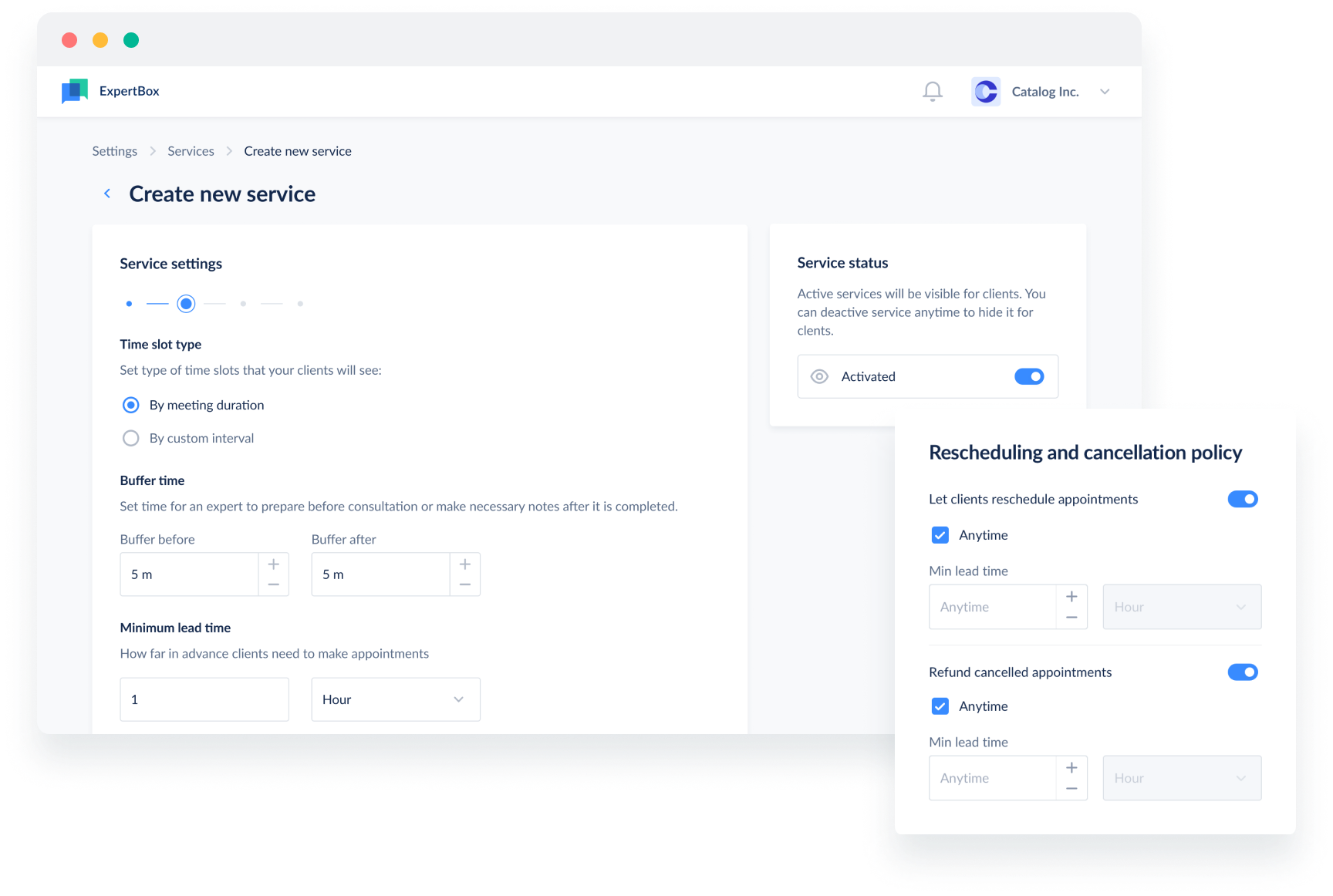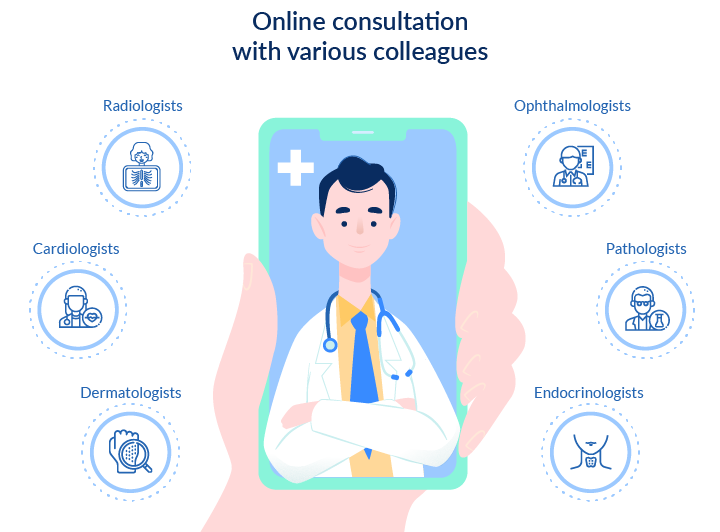Healthcare industry spending is rising faster in the US than anywhere else in the world. According to the National Health Spending Explorer, healthcare spending hit almost 20% of total US GDP in 2020. At the same time, the OECD forecasts that growth in health expenditures will outpace GDP growth for the next 15 years. Because of these increases, healthcare providers are looking for options to reduce their costs.
In an attempt to find a solution that won’t affect the quality of their services, many physicians have shifted to telemedicine. When used correctly, telemedicine allows practitioners to significantly reduce their expenditures and increase revenue.
Telemedicine can provide physicians with the following tangible benefits:
- Reduced overhead costs
- Reduced travel expenses
- New patient engagement
- Better patient retention
- Reduction in no-shows
- Mitigation of legal risks
- Flexible schedule and cancellation refunds
- Store-and-forward consultations
In this article, we’ll explain how does telemedicine save money, and offer you the list of its benefits potentially able to improve practitioners' finances.

How does telemedicine save money: 8 cost-saving solutions
Moving to internet-based consultations allows practitioners to get rid of office-related expenditures and risks. Instead, they get new opportunities for workflow optimization and performance improvements. With telemedicine, practitioners can do more with less money, reducing their operational costs and fostering patient engagement. So how does it work? Keep reading to find out.

Reduced overhead costs
This one of the first insights for clinicians who want to find out how telehealth is saving healthcare industry money. Online consultations can be provided from home, so there’s no need to spend a significant sum on office costs, such as:
- Office maintenance (e.g. for cleaning services)
- Office supplies
- Rental furniture
➤ Medical couches
➤ Medical cabinets
➤ Tables
➤ Chairs
- Reception area equipment
➤ Reception desk
➤ Computer
➤ Printer
➤ POS system
All of these are monthly fixed costs that in-person practitioners have to pay regardless of the number of visits they get. With telemedicine, physicians only have to pay for internet and affordable telemedicine software. Telemedicine vendors provide physicians with all necessary services so their entire traditional office is available in their virtual account on a mobile device, tablet, or desktop.
Get an estimate of how much it will cost to incorporate telemedicine practices into your business.
Reduced travel expenses
Going online means physicians don’t need to commute to work every day. Travel to the office results in another fixed cost affecting physicians’ budgets. However, it’s not only about paying for gas or public transportation. Commuting can take a significant amount of time. Implementing telemedicine allows physicians to save this time and use it for patient consultations, replacing a cost with an income opportunity.
New patient engagement
Remote healthcare services expand practitioners’ geographical reach. While in-person visits are mostly made by local patients, online consultations are available to patients across the country. If a practitioner’s medical license permits the practitioner to provide healthcare services in a particular state, there’s no barrier to using telemedicine to do so. If their license allows, physicians can even consult patients in other countries.
Consult more patients with virtual telemedicine solutions. See how easy it is to provide your services online with ExpertBox video meetings.
Better patient retention
Acquiring a new patient is five to 25 times more expensive than retaining an existing one. A service provider's patient is more likely to book a follow-up appointment because of their pre-established trust. Thus, focusing on increasing the lifetime value of current patients may be most beneficial for practitioners.
However, many patients forget to go to their appointments. An efficient way to mitigate that problem is by reaching out to patients with automated reminders about their regular examinations. Physicians can use telemedicine services to send scheduled emails and in-app messages with upcoming appointment information. Physicians can send follow-up messages after a patient's appointment as well.

Through telemedicine messaging platforms, doctors can also inform their patients about important health information, discounts, or referral programs. Using this approach, practitioners can save money on getting new patients while focusing on increasing the lifetime value of existing patients. Besides patient retention, automated reminders address another challenge — patient no-shows.
Reduction in no-shows
According to the National Library of Medicine, in various healthcare specialties the no-show rates can range from 12 to 80 percent. No-shows drastically affect physicians’ budgets. At first glance, it may not look like a big deal to have several skipped appointments in a week. But we want to learn how telehealth saves healthcare money, so let’s do some math and estimate the losses. On average, doctors see 20 patients a day and one visit brings in $287 in revenue. Let’s multiply the minimum no-show rate by the average number of patients per day, average visit revenue, and the number of business days in a year:

Impressive, right? Physicians can greatly reduce profit loss and the no-show rate by sending out automated notifications with a telemedicine platform. Patients can receive emails and in-app alert messages reminding them about upcoming appointment the day before, 30 minutes before, and at the start of the appointment. Using these tactics will decrease the chances that patients will forget their appointments. As a result, practitioners can save tens of thousands of dollars.

Mitigation of legal risks
Providing healthcare services involves many legal risks. To ensure standardization in daily operational activities, practitioners strictly follow rules, procedures, and policies in compliance with medical legal regulations. While risks can't be completely avoided, they can be minimized.
Explore common telemedicine legal risks and learn how practitioners can reduce them hassle-free.
A traditional practice deals with a fair amount of paperwork. Physicians have to collect necessary information about their patients, fill out forms, prescribe treatment, and organize all the files to be reported to supervisory authorities when needed. It’s not easy to control the process when there are several patients on the practitioner’s schedule. And when patient visits are back to back, the chances of missing a detail increases even more, raising the chance of dramatic lawsuit expenditures for misfiling.
Telemedicine platforms help to reduce the risk of documentation errors. With telemedicine management systems, practitioners can keep patients’ information organized and easily accessible.

All medical records are virtually stored in one place and can be quickly found through the search bar. The forms are designed in a field-by-field manner, leading physicians through every field that should be filled before and after an appointment. It’s a simple and reliable way to keep consistent, accurate, and complete documentation while safely running a practice. Thus, practitioners can protect themselves from potential lawsuits.
Pro tip: Healthcare providers are liable for the security of medical records and health data. To prevent lawsuits related to breaches of patients’ data, practitioners must use HIPAA-compliant telemedicine platforms.
Flexible schedules and cancellation refunds
Using telemedicine, physicians can provide consultations beyond the 9 am to 6 pm time frame. Telemedicine platforms are accessible 24/7, which means physicians are able to work with more people. A lot of patients can’t take time off work, so they need an early morning or late evening consultation.
On a telemedicine platform, practitioners can make their online calendar public so people can make appointments for free slot times. This is another option to get new patients and earn extra income. Also, such flexibility increases efficiency since there may be fewer idle hours in the physician's work day.
On top of that, telemedicine platforms allow practitioners to protect themselves from no-show profit loss. Physicians can add policies, set payment rules, and request refunds for canceled meetings.

By using telemedicine platforms, physicians are able to receive advance payments from their patients. If a patient decides to skip a booked appointment, the physician still receives the payment.
Book more appointments and better your performance with ExpertBox scheduling solutions.
Store-and-forward consultations
Physicians can earn extra money by consulting with other practitioners online. There are situations when a specialist may want a second opinion from a colleague. Some cases may be ambiguous, so physicians consult with other physicians to prescribe the right treatment. For instance, a certain skin disorder may be difficult to identify since a skin rash may be indicative of several diseases.

Through telemedicine platforms, specialists can send patients’ medical records to each other and remotely analyze their cases together. To ensure patient confidentiality, telemedicine uses store-and-forward communication — a secure communication system that allows physicians to exchange laboratory reports, images (e.g. MRI scans and X-rays), sound and video studies, or anything else they may need with each other. Since many treatment plans are based on analysis of these documents, telemedicine consultations work for a range of specialties.
Summing up
Healthcare industry spending is growing from year to year, and it’s projected to be a long-term trend. Thus, it’s crucial for physicians to start saving money. The earlier physicians implement cost reduction practices, the more financial benefits they will get in the future. Today, telemedicine provides solutions that allow practitioners not only to cut operating costs but to embrace new sources of income. Fostering patient engagement and reducing costs is a time-tested way for physicians to alleviate financial burdens and succeed in the healthcare industry.
If you’re considering starting your own telemedicine business, check out the 8 best practices ExpertBox has identified to make your launch successful.
FAQ
-
Telemedicine reduces physicians’ operating costs and provides new income opportunities by:
- Reducing overhead costs
- Reducing travel expenses
- Engaging new patients
- Better patient retention
- Reducing no-shows
- Mitigating legal risks
- Offering flexible schedules and cancellation refunds
- Supporting store-and-forward consultations



